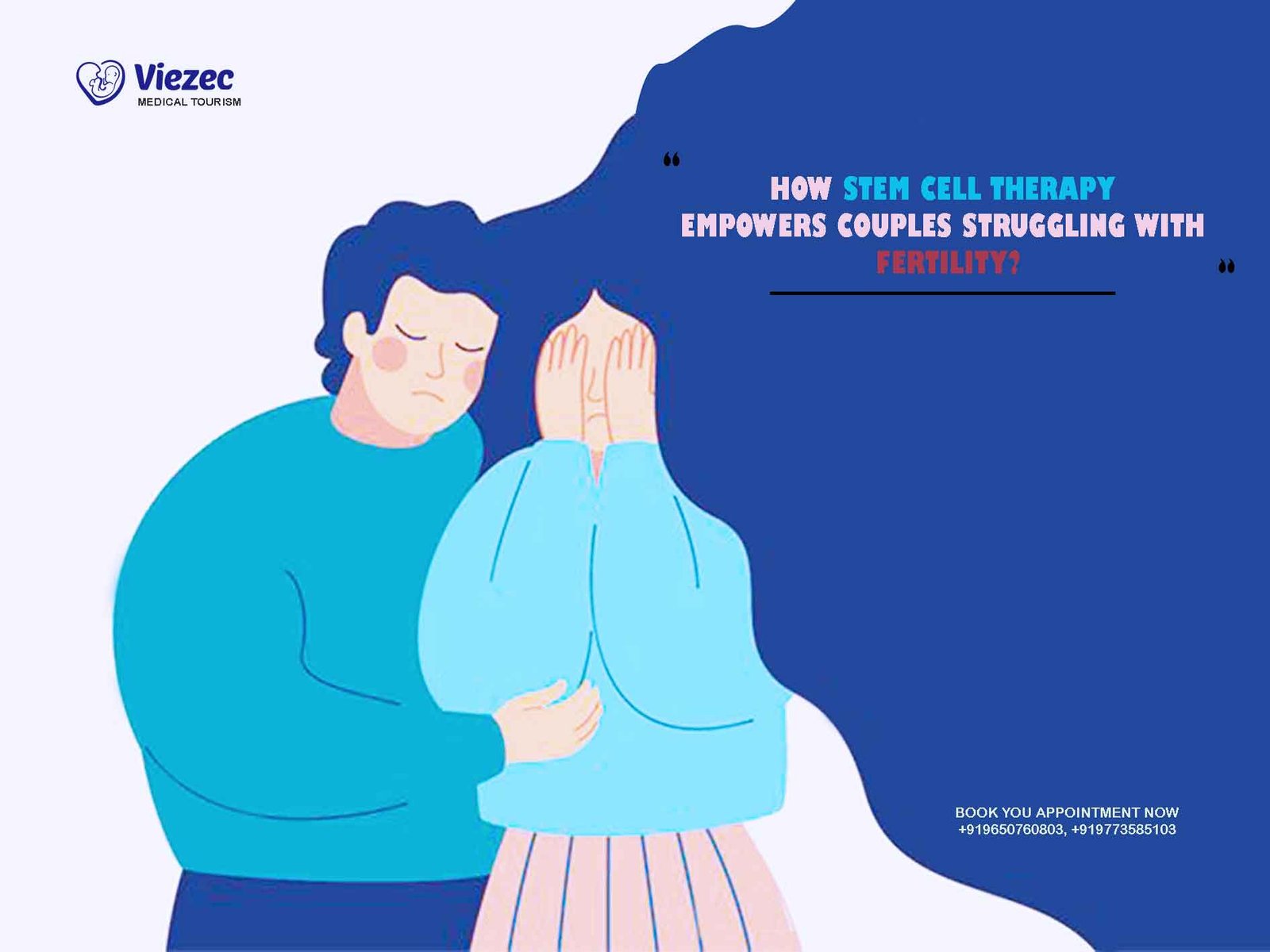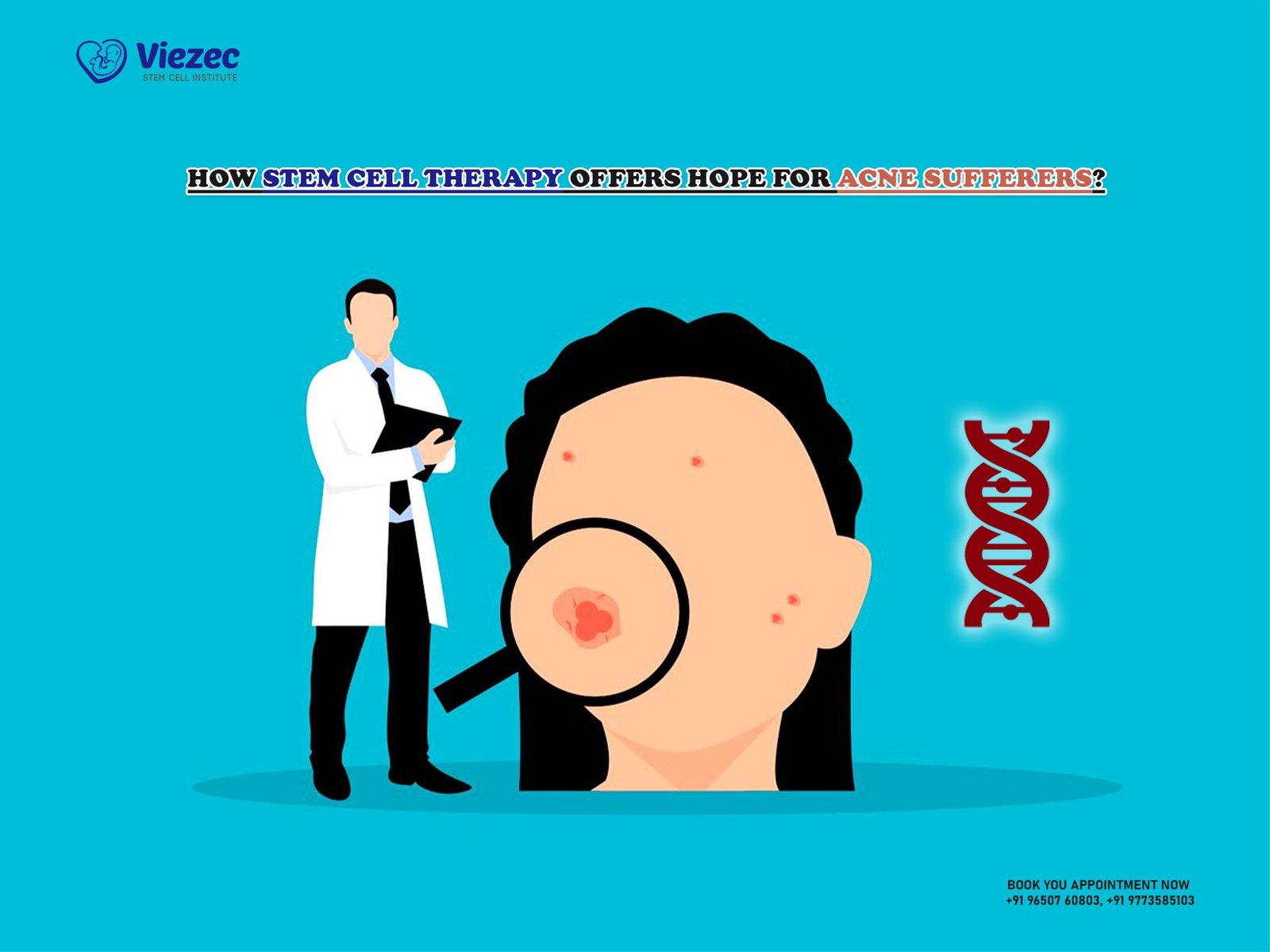Stem cell therapy is transforming the way we treat chronic knee pain and joint degeneration. This cutting-edge, non-surgical treatment harnesses the body’s natural healing power to reduce inflammation, regenerate cartilage, and restore mobility—offering hope to those suffering from osteoarthritis, cartilage damage, and joint stiffness.
In this article, we explore how stem cell knee injections work, what conditions they treat, and how they compare to traditional surgery. You’ll learn about the step-by-step procedure, potential benefits, expected outcomes, and the average cost of treatment. We also guide you on choosing the right provider, including why Viezec is a trusted name in regenerative care.
Whether you’re looking to avoid knee replacement surgery or simply improve your quality of life, this guide will help you make an informed decision about your next steps in joint health.
Understanding Stem Cell Knee Injections
What Are Stem Cell Injections for Knees?
Stem cell knee injections are an exciting breakthrough in regenerative medicine. This therapy uses your body’s own repair system—specifically stem cells taken from bone marrow or fat tissue—to help heal damaged areas inside the knee joint. These powerful cells can transform into different types of tissue, such as cartilage or bone, which makes them uniquely suited for joint repair.
Once collected, the cells are carefully processed and then injected directly into the knee, targeting areas of damage. Unlike traditional pain management methods that mask symptoms, stem cell injections aim to support actual healing from within.
How Do They Work in Joint Repair?
Stem cells don’t just sit passively inside the joint—they go to work. Once injected, they begin reducing inflammation, releasing healing signals called growth factors, and stimulating your body’s natural repair processes. These actions help rebuild damaged cartilage, improve joint cushioning, and restore mobility over time.
In short, stem cell therapy doesn’t just treat the symptoms—it addresses the root cause of joint pain, making it a regenerative solution with long-term potential.
Types of Knee Conditions Treated with Stem Cells
Stem cell therapy is not a one-size-fits-all treatment—it’s a versatile option used to address several common knee conditions. Whether you’re dealing with early joint discomfort or chronic degeneration, regenerative medicine may offer relief and improved function without the need for surgery.
Knee Osteoarthritis
Knee osteoarthritis is one of the most common reasons patients seek stem cell treatment. It occurs when the protective cartilage that cushions the knee joint wears away, causing pain, swelling, and stiffness.
Stem cell injections can help by reducing inflammation and promoting cartilage repair. For patients in the early to moderate stages of osteoarthritis, these treatments may slow disease progression and improve daily comfort—allowing for better movement and fewer flare-ups.
Cartilage Degeneration
Cartilage doesn’t heal easily on its own, but stem cell therapy offers a unique solution. By stimulating the growth of new cartilage tissue, stem cells can help rebuild the cushioning between bones that gets lost through injury or wear-and-tear.
This regenerative approach is particularly promising for athletes or aging adults who want to avoid surgery but still maintain an active lifestyle.
Chronic Inflammation and Joint Pain
Inflammation is often the underlying cause of persistent joint pain. Whether it’s due to repetitive stress, autoimmune conditions, or past injuries, chronic inflammation wears down the knee over time.
Stem cells naturally regulate the immune response and release anti-inflammatory proteins. For patients who have tried physical therapy, medications, or injections with limited success, stem cell therapy may offer lasting relief by calming the inflammation at its source.
Take the First Step Towards Knee Pain Relief!
Experience a revolutionary approach to joint healing with our stem cell injections. Don’t wait—schedule your appointment today!
Knee Joint Stem Cell Injections – A Non-Surgical Alternative
Modern medicine is shifting toward treatments that heal rather than replace. Stem cell knee injections represent this shift by offering a regenerative option that doesn’t involve the risks or downtime of traditional surgery.
How Joint Injections Differ from Surgery
Traditional knee surgeries, especially total knee replacements, involve removing damaged parts of the joint and inserting artificial components. While effective for some, these surgeries are invasive, require long recovery times, and come with a higher risk of complications—especially for older adults or those with health concerns.
Stem cell injections, on the other hand, are performed using a minimally invasive technique. There are no large incisions or hospital stays. The treatment is usually done in a clinic setting, and most patients return home the same day. Recovery is typically faster, with many people resuming light activity within a few days.
Benefits Over Knee Replacement Procedures
Stem cell therapy offers several meaningful advantages over knee replacement, especially for patients in the early to moderate stages of joint degeneration:
Lower Risk of Complications: No general anesthesia or surgical incision means fewer potential risks.
No Artificial Implants: Your body is using its own cells to repair itself—nothing foreign is introduced.
Personalized Healing: Treatments are based on your biology, offering a customized approach to joint repair.
Faster Recovery: Most patients return to normal activities much sooner than after surgery.
Delay or Avoid Surgery: Stem cells may extend the life of your natural joint, postponing or even eliminating the need for surgical intervention.
For many, these benefits are not just medical—they’re life-changing. Stem cell injections can mean less pain, more movement, and a return to doing what you love without major disruption.
Are Stem Cell Injections a Replacement for Knee Surgery?
For many patients struggling with knee pain, the idea of avoiding surgery is incredibly appealing. Stem cell therapy offers a potential path to healing that doesn’t involve implants, lengthy hospital stays, or major disruptions to daily life. But does that mean it can replace surgery entirely? The answer depends on your individual condition.
Can They Delay or Prevent Total Knee Replacement?
Yes, in many cases, stem cell injections can delay—or even prevent—the need for knee replacement surgery. Especially when used in the early to mid-stages of osteoarthritis or cartilage damage, this therapy helps slow joint degeneration, reduce pain, and improve mobility. By preserving what’s left of the natural joint and enhancing its function, patients often regain quality of life without going under the knife.
However, stem cell therapy is not a magic bullet. It’s most effective when joint damage is not yet severe and when the patient is still relatively mobile.
When Is Surgery Still Necessary?
If the knee has reached an advanced stage of degeneration—such as bone-on-bone contact, joint instability, or severe loss of function—stem cell therapy may not provide sufficient relief. In such cases, a total knee replacement might be the best option.
Also, individuals with mechanical issues in the joint structure (like significant bone deformities) or who’ve already undergone failed treatments may find that surgery remains the more reliable choice.
Still, even for those who eventually need surgery, stem cell therapy can help bridge the gap, easing pain and extending the life of the joint until surgery becomes truly necessary.
The Procedure – What to Expect
Understanding what happens before, during, and after a stem cell injection can ease concerns and help you feel more confident about your decision. Thankfully, the process is straightforward, minimally invasive, and usually completed in just one day.
Step-by-Step Guide to Knee Stem Cell Injections
Initial Consultation and Imaging
The journey begins with a thorough evaluation. Your physician will assess your symptoms, medical history, and may order imaging—such as X-rays or MRI scans—to determine if you’re a good candidate.
Harvesting the Stem Cells
The next step involves collecting stem cells, typically from your bone marrow (usually the hip area) or adipose tissue (belly fat). This is done under local anesthesia to ensure comfort.
Processing and Concentration
After collection, the sample is processed using specialized equipment to concentrate the stem cells and remove unwanted components. This step ensures only the most viable cells are used.
Guided Injection Into the Knee Joint
Using ultrasound or fluoroscopy (real-time imaging), your physician will carefully inject the stem cell concentrate directly into the affected area of your knee. This targeted delivery enhances precision and effectiveness.
Post-Procedure Care
You’ll be monitored briefly after the injection, and most patients are sent home the same day with post-care instructions. Follow-up visits are typically scheduled to monitor your progress.
How Long Does the Procedure Take?
While preparation and observation may take a few hours, the actual injection itself takes less than 30 minutes. Most patients spend just half a day at the clinic and return home shortly after.
Is Anesthesia Required?
Only local anesthesia is used for both harvesting and injection, meaning you’ll remain awake and alert without experiencing significant discomfort. This avoids the risks associated with general anesthesia and allows for a quicker recovery.
Have Questions About Stem Cell Therapy?
Our team is here to guide you through your treatment options. Contact us today to learn more about how stem cell therapy can help.
Stem Cell Injections for Knee Cartilage Regeneration
Cartilage doesn’t heal easily—and once it’s worn down, many patients are told surgery is their only option. But stem cell therapy is changing that narrative. By using the body’s own regenerative power, this innovative treatment can help repair damaged cartilage and restore cushioning within the joint.
Can Cartilage Be Restored?
Yes—while complete regeneration of cartilage is complex and depends on several factors, studies show that stem cells can stimulate cartilage repair by activating the growth of chondrocytes (the cells responsible for building cartilage). These cells also help slow down further damage and improve the overall environment within the joint.
For people with early to moderate cartilage loss, this regeneration can mean a significant reduction in pain, better joint movement, and improved quality of life without surgery.
Insights from Medical Studies and Trials
Several clinical studies support the regenerative potential of stem cell injections. For example:
-
A review in the journal Stem Cells International found that mesenchymal stem cells (MSCs) improved pain and function in patients with knee osteoarthritis, with some evidence of cartilage thickening on MRI.
-
Another clinical trial published in The American Journal of Sports Medicine showed improved cartilage quality and reduced symptoms in athletes with cartilage defects after stem cell treatment.
While results vary, especially based on age and the severity of damage, the science is promising—and evolving fast.
Success Rates and Long-Term Outcomes
Many patients experience relief from pain and stiffness within weeks, with benefits lasting from 6 months to several years. Success often depends on:
The patient’s overall health and activity level
The severity of cartilage degeneration
The type and quality of stem cells used
Adherence to post-treatment care
What makes this treatment stand out is not just short-term pain relief, but the possibility of slowing or reversing joint damage—a goal that traditional therapies rarely achieve.
Managing Knee Osteoarthritis with Stem Cell Therapy
Knee osteoarthritis is a progressive condition, but that doesn’t mean you’re powerless against it. Stem cell therapy offers a forward-thinking, proactive approach to managing this common issue—without resorting to invasive surgery.
Slowing Down Degeneration
Osteoarthritis gradually wears away the cartilage in your knee joint, leading to pain, stiffness, and reduced mobility. Stem cell injections can help slow this degeneration by reducing inflammation, encouraging tissue repair, and improving the joint’s internal environment.
Unlike cortisone shots, which only mask symptoms temporarily, stem cell therapy works at a cellular level to promote healing and preserve existing cartilage. This means fewer flare-ups and more sustained joint health.
Improving Mobility and Reducing Stiffness
One of the most noticeable improvements after treatment is enhanced mobility. Patients often report being able to walk longer, climb stairs more easily, or return to low-impact exercise with much less discomfort.
Stem cells help reduce joint stiffness by calming inflammation and encouraging better lubrication within the joint. This leads to smoother movement and increased flexibility—making everyday tasks easier and less painful.
For many patients, especially those in the early stages of osteoarthritis, these benefits can delay the need for surgery and restore confidence in their ability to stay active.
Cost of Stem Cell Injections for the Knee
Understanding the cost of stem cell therapy is an important part of deciding whether it’s right for you. While prices can vary widely, it’s helpful to know what factors affect the cost and whether any part of the treatment might be covered.
Average Price Range in the U.S. and Worldwide
In the United States, the cost of a single stem cell injection for the knee typically ranges from $3,000 to $8,000. The price depends on several factors, including the type of stem cells used, the clinic’s reputation, and whether multiple injections are needed.
Internationally, more affordable options exist, especially in medical tourism destinations such as India, Mexico, and Thailand, where high-quality care is available at lower prices—often between $1,500 to $4,000.
Factors That Influence the Cost
Type of Stem Cells Used
Bone marrow-derived stem cells are often more costly to harvest than adipose (fat-derived) stem cells due to the extraction process.
Clinic Expertise and Technology
Specialized clinics with experienced physicians and advanced lab facilities may charge more, but often provide better outcomes.
Number of Treatments Needed
Some patients see significant improvement after one injection, while others may need a series for optimal results.
Diagnostic and Follow-Up Care
Imaging, consultations, and post-treatment monitoring can add to the total cost, but they are essential for ensuring effectiveness and safety.
Potential Risks and Side Effects
Stem cell therapy is generally considered safe when performed by experienced professionals. However, as with any medical procedure, it’s important to understand the possible risks so you can make an informed decision.
Common Reactions After the Injection
Most patients tolerate stem cell knee injections well, but you may experience mild, temporary side effects at the injection site, such as:
-
Swelling or soreness
-
Mild bruising
-
Stiffness or discomfort during movement
These symptoms typically subside within a few days and can be managed with rest, ice, and over-the-counter pain relief.
How to Minimize Risks
To reduce your chances of complications, follow these key steps:
-
Choose a reputable provider with experience in orthopedic regenerative medicine.
-
Follow pre- and post-treatment instructions carefully, including avoiding strenuous activities immediately after the injection.
-
Communicate any existing health conditions with your provider beforehand.
A well-managed treatment plan significantly improves your comfort and safety during recovery.
When to Contact a Doctor
Although serious side effects are rare, you should contact your healthcare provider immediately if you notice:
Persistent or worsening pain
Signs of infection (redness, warmth, or fever)
Increased swelling or joint instability
Numbness or unusual sensations around the injection site
Prompt attention to these symptoms ensures a quick response and reduces the risk of long-term issues.
Ready to Start Your Journey to Pain-Free Knees?
Transform your life with cutting-edge stem cell injections for knee pain. Book your consultation now!
Who Is an Ideal Candidate for Stem Cell Knee Treatment?
Not everyone is a perfect fit for stem cell therapy—but for the right patient, it can be life-changing. Understanding who benefits most from this treatment helps set the stage for better outcomes and informed choices.
Age, Health, and Condition Considerations
Stem cell therapy tends to work best for individuals who:
-
Are in the early to moderate stages of knee osteoarthritis
-
Experience chronic joint pain that hasn’t responded well to physical therapy or medications
-
Are generally healthy, with no major immune system disorders or uncontrolled chronic illnesses
-
Are non-smokers, as smoking can interfere with healing and reduce the effectiveness of regenerative treatments
-
Maintain a healthy weight, since excess body weight puts additional strain on knee joints and can impact recovery
Age is also a factor—while there’s no strict age limit, younger and middle-aged patients often respond more favorably because their stem cells are typically more active and responsive.
When to Consider Other Treatment Options
Stem cell therapy may not be suitable if:
You have severe joint damage or “bone-on-bone” arthritis
There is significant joint deformity or instability
You’ve already undergone multiple failed procedures
You need immediate structural correction that only surgery can provide
In such cases, traditional options like partial or total knee replacement may be more effective. However, stem cell therapy might still play a role in post-surgical recovery or slowing further degeneration in surrounding joints.
Choosing the Right Provider for Stem Cell Knee Injections
When it comes to stem cell therapy, your results are only as good as the provider you choose. Selecting an experienced, ethical, and science-backed clinic is crucial for both safety and effectiveness. With the growing popularity of regenerative medicine, it’s more important than ever to do your research and partner with the right team.
What to Look for in a Clinic or Specialist
A reputable stem cell provider should offer:
Board-certified specialists in orthopedics or regenerative medicine
FDA-compliant protocols for stem cell harvesting and processing
Advanced imaging techniques (like ultrasound or fluoroscopy) for precise injection placement
A proven track record of successful outcomes with transparent patient reviews
Comprehensive care, including consultation, follow-up, and rehabilitation support
Avoid clinics that make exaggerated claims, push unnecessary treatments, or skip proper diagnostics. Quality stem cell therapy is grounded in real science—not hype.
Why Consider Viezec
If you’re exploring international options for advanced stem cell therapy, Viezec in India is a trusted name. Known for its commitment to patient safety and innovation, Viezec offers:
Cost-effective treatments without compromising on quality
A team of highly experienced doctors and stem cell experts
Customized protocols tailored to each patient’s condition
State-of-the-art facilities and internationally accredited labs
End-to-end support, including travel, stay, and aftercare for global patients
Viezec stands out for making regenerative medicine accessible, ethical, and results-driven—especially for patients seeking effective alternatives to surgery.
Questions to Ask Before Starting Treatment
Before committing to any provider, make sure to ask:
-
What type of stem cells do you use (autologous vs. allogeneic)?
-
How many procedures have you performed for knee conditions?
-
What are the realistic outcomes for someone in my condition?
-
Are follow-up appointments and rehab included in the treatment plan?
-
What safety measures are in place during harvesting and injection?
An informed decision sets the foundation for a successful outcome—and peace of mind.









